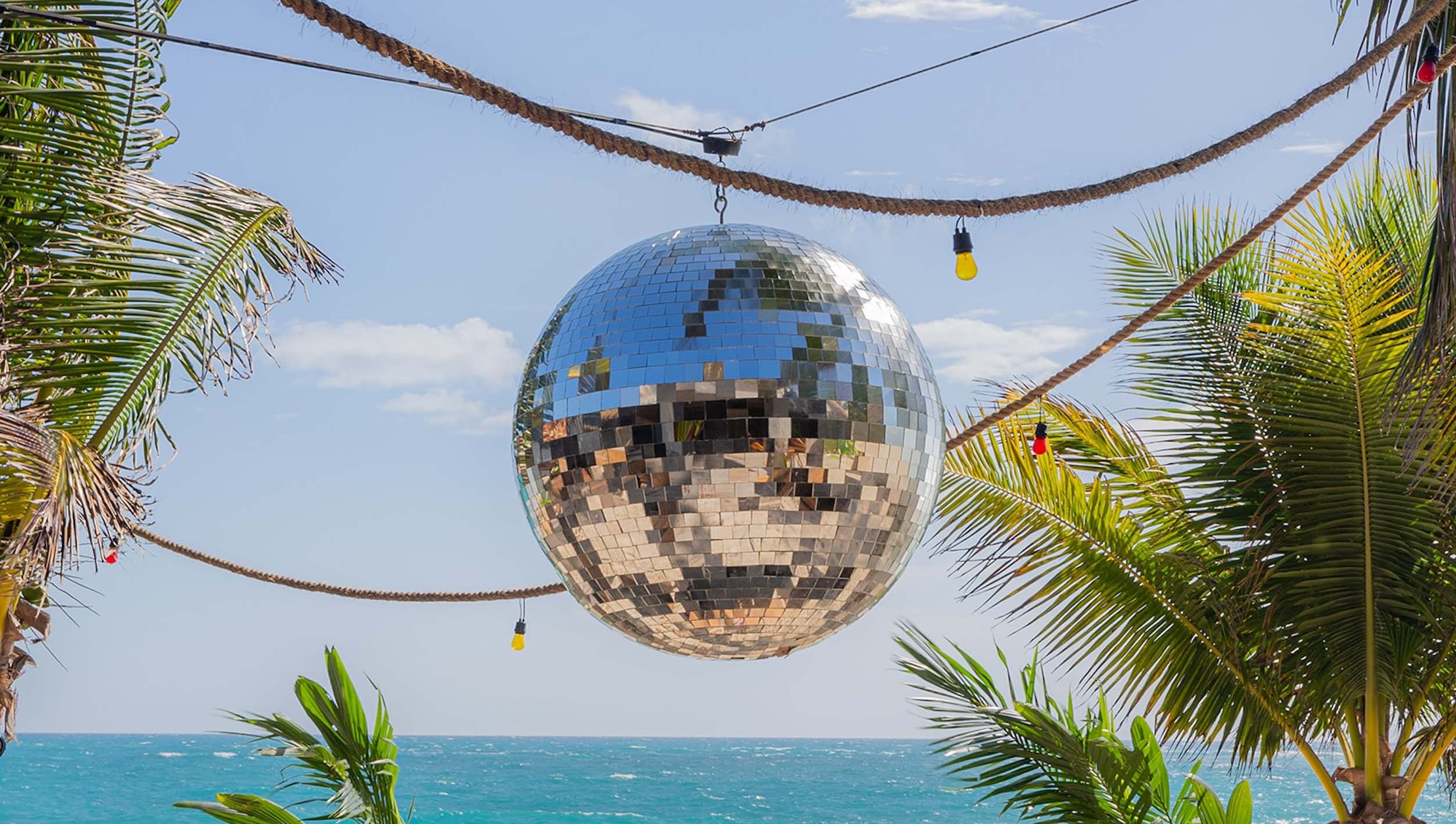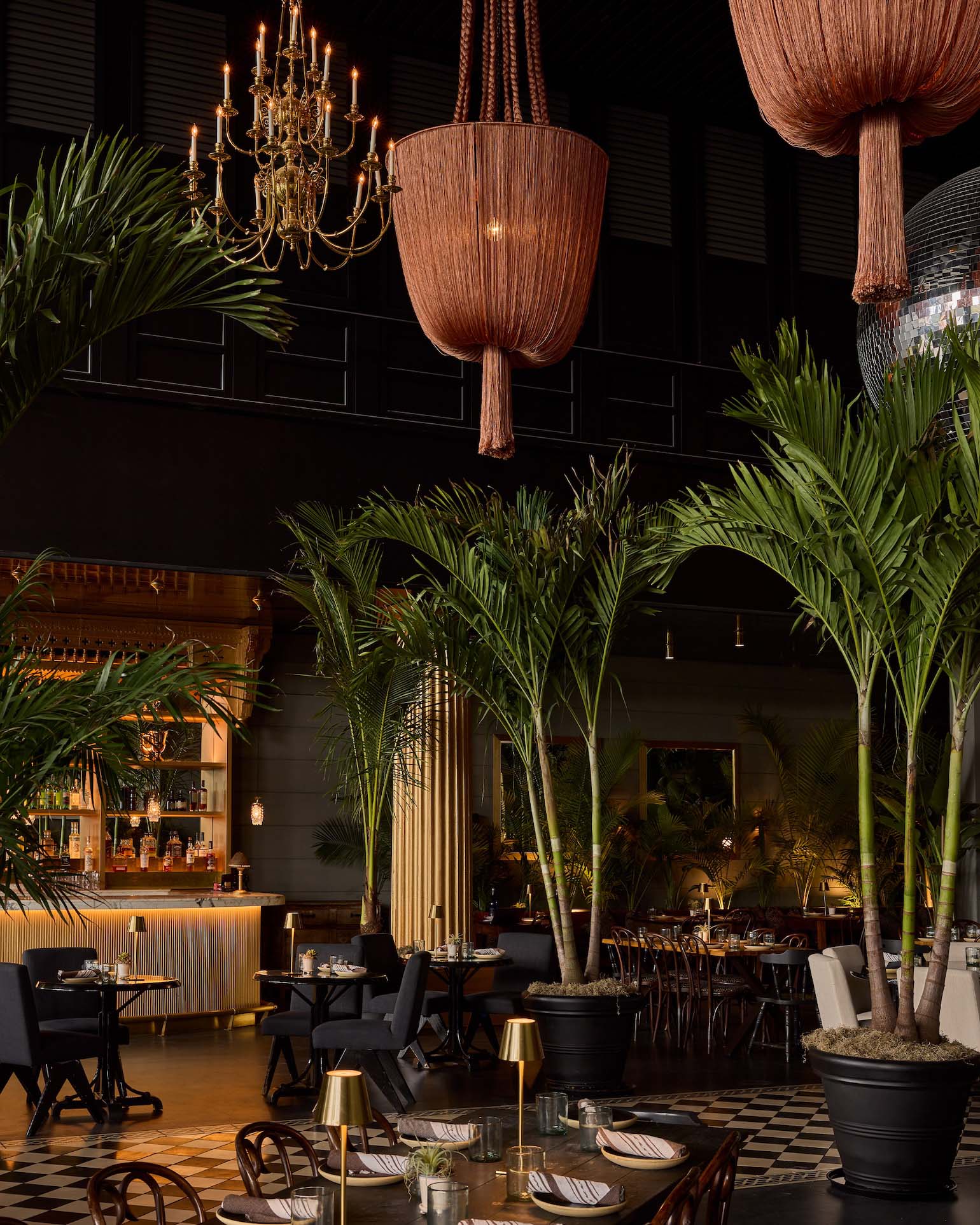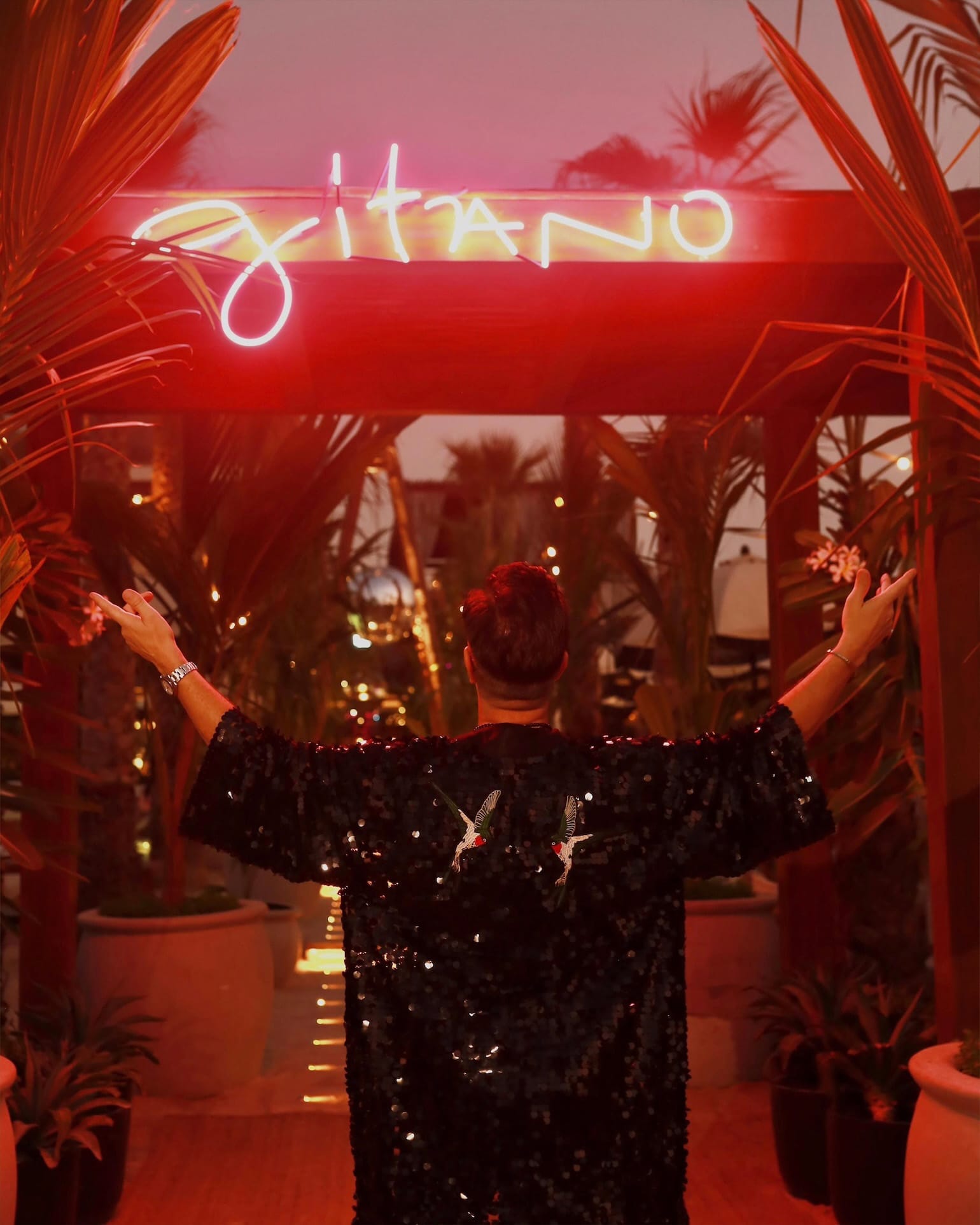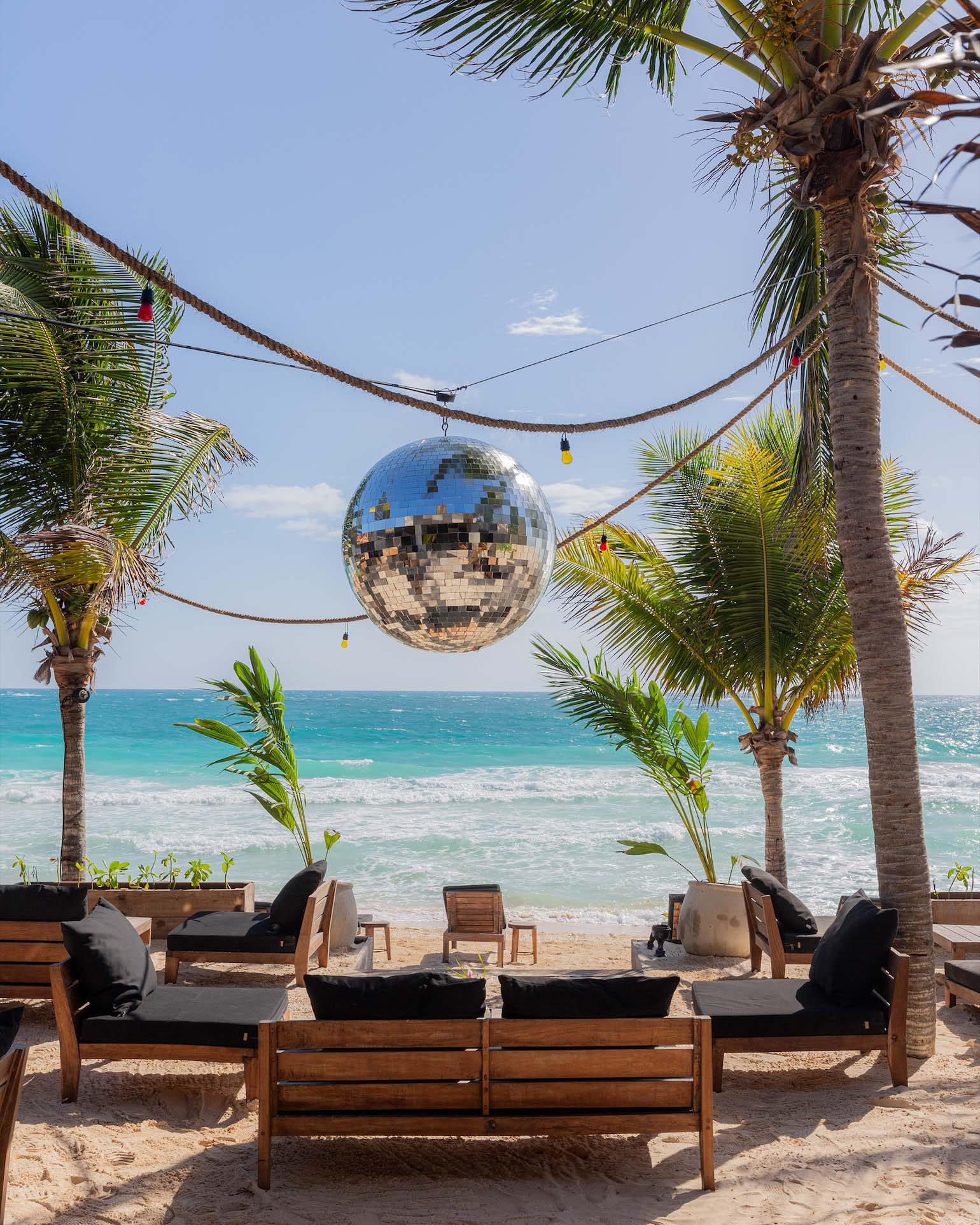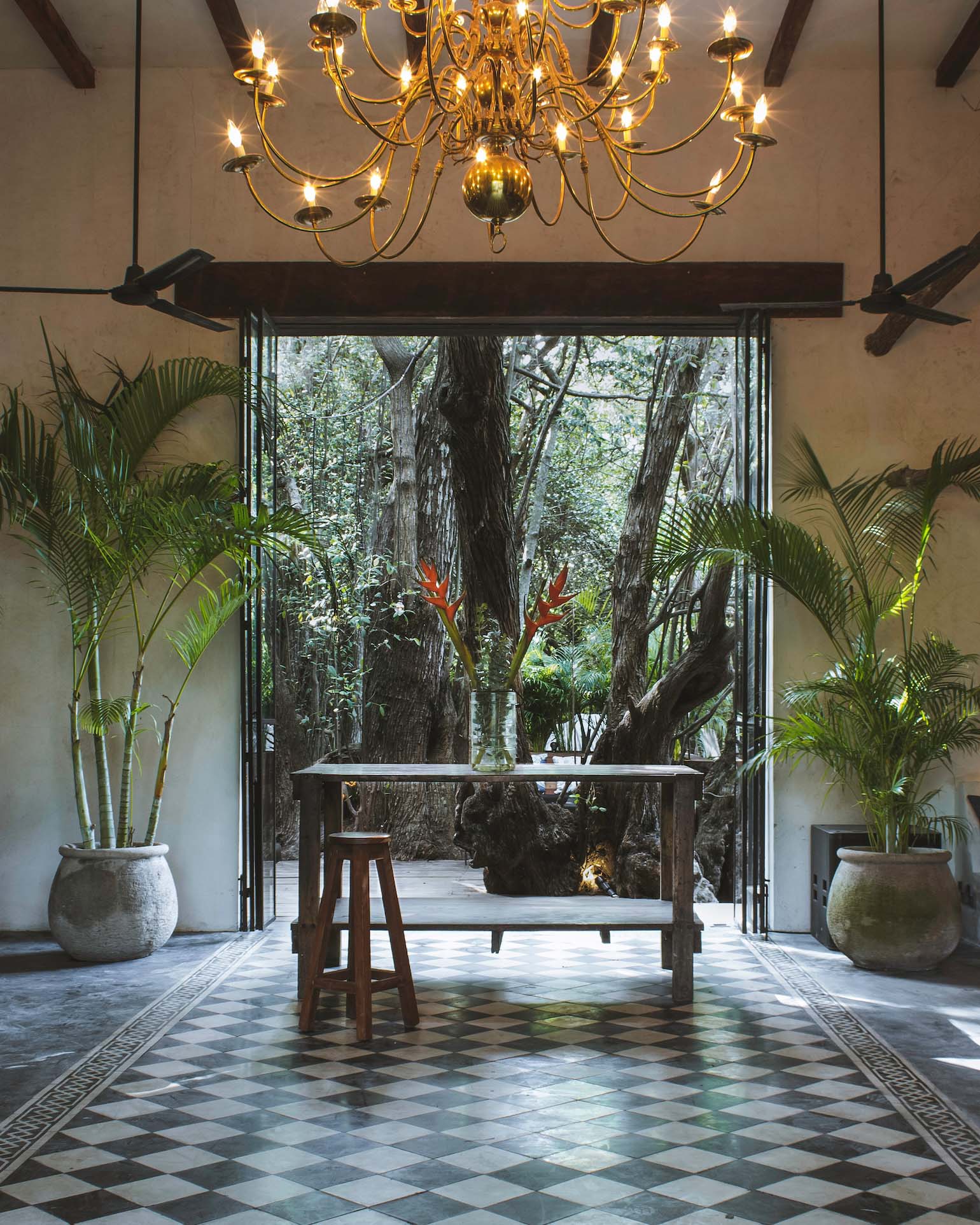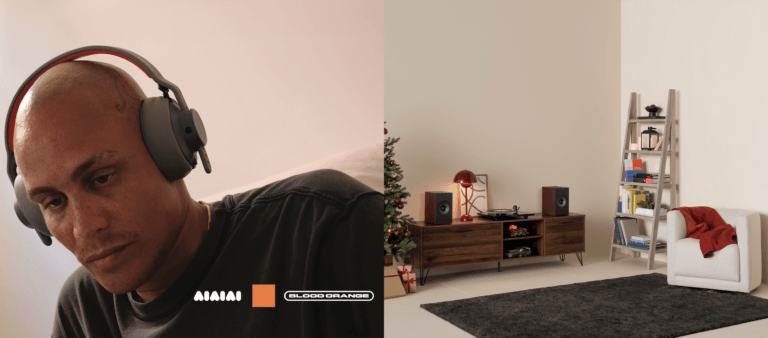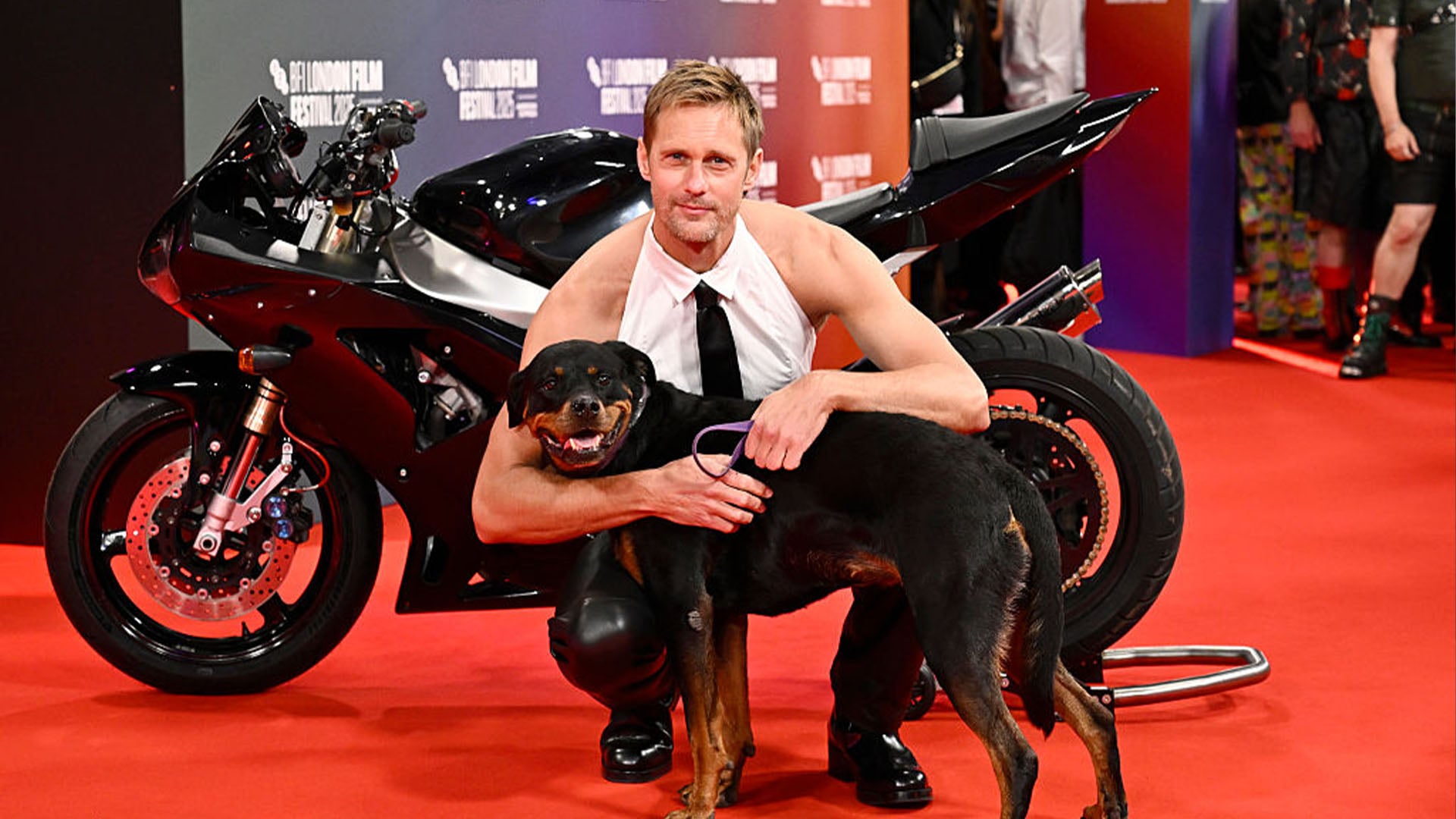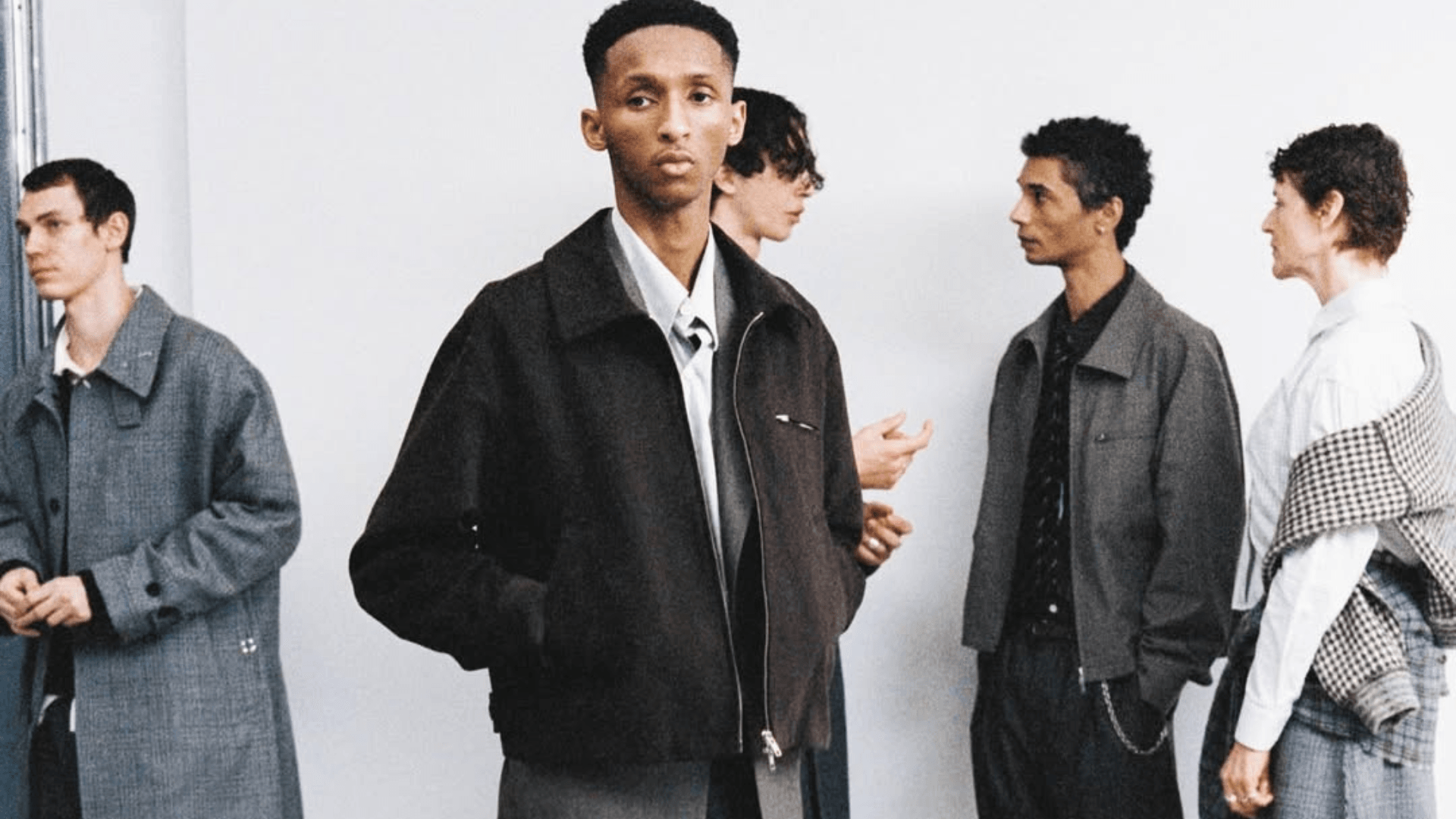From Wall Street to Tulum, and beyond – he left Goldman Sachs to transform the fashion industry, before masterminding the global hospitality powerhouse.
Our friendship started with a spark: the kind of connection that only happens once or twice in a lifetime. Before GITANO, before Tulum, before pink marble maxi bars and jungle soirées. Back then, James Gardner was deep in the world of high finance on Wall Street. I was finding my own rhythm in a very different sphere, fashion. But even in those early chapters, there was something in James that set him apart. Something curious, magnetic, a little rebellious. When he wasn’t on the trading floor, he was at fashion parties, early Alexander McQueen shows and hanging out with the likes of Kate Moss. Where there were designers, artists and thinkers, you’d find him.
He soon left the suit behind to enter the world, professionally, that he’d long been immersed in off the clock, revolutionising fashion by taking the industry’s biggest houses (Bottega Veneta, Burberry, Louis Vuitton to name but a few) into the digital age on the cusp of ecommerce. By the early 2010s, his work in fashion was done. However, always pushing boundaries and chasing beauty, it was time for a new vision. That spirit led him to the Yucatán jungle, to the wild magic of Tulum. GITANO was born.
From its 2013 origins as one sultry jungle restaurant with mezcal cocktails and disco balls swinging in the moonlight, GITANO has become a global brand rooted in modern bohemian elegance. Dubai, New York City, and now, the pièce de résistance: CASA GITANO, a new bohemian luxury beach hotel located in the heart of South Tulum. It’s the rustic-chic that has long enthralled visitors of the restaurants, reimagined. Spa-style bathrooms, artisan-crafted furniture, indoor-outdoor lounges, and, of course, the now-iconic pink marble maxi bars. It’s barefoot luxury with soul.
I had the privilege of being one of the first guests at CASA GITANO, spending a beautiful Christmas and New Year in the jungle paradise last winter. The magic was undeniable. Since then, James has continued to evolve, always ten steps ahead, crafting experiences that are always unforgettable and inimitably him. “High camp is what I like,” he tells me. “We don’t do kitsch. We don’t even do camp. We do high camp.”
James Gardner: Hi, darling.
Luke Day: Hi, love. How are you?
JG: We’re fabulous. I’ve been up for quite a few hours already in Dubai.
LD: How is Dubai? How is the mothership? Well, she’s not the mothership, but…
JG: She’s the international HQ. New York is HQ, Tulum is the mothership, Dubai is the international. Honestly, it’s really nice to arrive back. We did the overnight [flight from London]. We were going to stay one more night in London, and I couldn’t with the grey skies, babe. One forgets how often you have those grey skies there.
LD: She’s quite gloomy right now, right?
JG: I mean, we love London, of course, but she’s known to be gloomy and grey. But anyway, Dubai is hot and clear and gorge. We got here, arrived at the house at 8.30 am, showered and headed straight to GITANO for breakfast tacos at 11 o’clock.
LD: Gorgeous. How is she? Obviously, I’ve seen all of them apart from the new New York one. But when I got to the Dubai one, I was like, ‘Okay, this is like the GITANO fantasy on crack.’ She’s perfect.
JG: It’s all about how it makes you feel, right? So I love that you said that.
LD: I feel like I haven’t seen you for a hot minute. The last time I saw you was in London, and thinking about London almost feels like going back to the beginning of us, because I met you in London.
JG: That’s true. The first time I remember meeting you is going into or coming out of one of the fabulous McQueen shows with thousands of people. I just remember you being gorgeous, smiling, fabulous and lovely.
LD: You were this fabulous creature, and I remember being fascinated by you, because I’d always hung out with fashion people, and you just seemed so charismatic and…
JG: Ridiculous?
LD: Like something out of a movie. Just pretend that I don’t know you: what did you do on Wall Street, and how did you go from that to working in fashion?
JG: So I started my career in London at a company called Accenture, which is a strategy consulting company. I found that they put really young people in really important roles very early on, and you would either sink or swim. And I swam.
LD: Were you a child genius?
JG: I mean, I’m not going to say that. But I was working in London, and at a meeting with all these important Accenture people, they were like, ‘We need someone to go to Goldman Sachs in New York for six months, and we’ll take care of everything.’ I’m like, ‘Oh my god, yeah, let’s go.’
We did this very intensive training programme in Chicago, when we joined Accenture, and every time I went, I always stopped through New York. I just went to all the clubs. I was a little baby queen.
LD: I was about to say, what age were you?
JG: Twenty-four, maybe. So I appeared in New York working at the best investment bank in the world on Wall Street at the time of Gordon Gekko, “Greed is good”, when Wall Street was the thing. Fashion wasn’t this crazy business that everyone knows about. I had this really glamorous apartment right on the edge of the Hudson River, overlooking the Statue of Liberty – a duplex. I had a sports car.
LD: Of course you did.
JG: And I’m working on Wall Street. I was there for about a year, and there was this gay bar on 14th Street called Flamingo East. It was very cool. I was going there, and there were all these girls. I knew nothing about fashion. And I’m like, ‘Why are there girls?’ But then I’m chatting to this English girl and I’m like, ‘Can I get you a drink, darling?’ And Sue Stemp was like, ‘Well, you can, but it’s free. It’s a fashion party.’ Sue worked for Ghost, who were doing the party, and she gave me her number. I called her the very next day because I was like, ‘Oh my god, who is this gorgeous creature?’ And I arranged to pick her up.
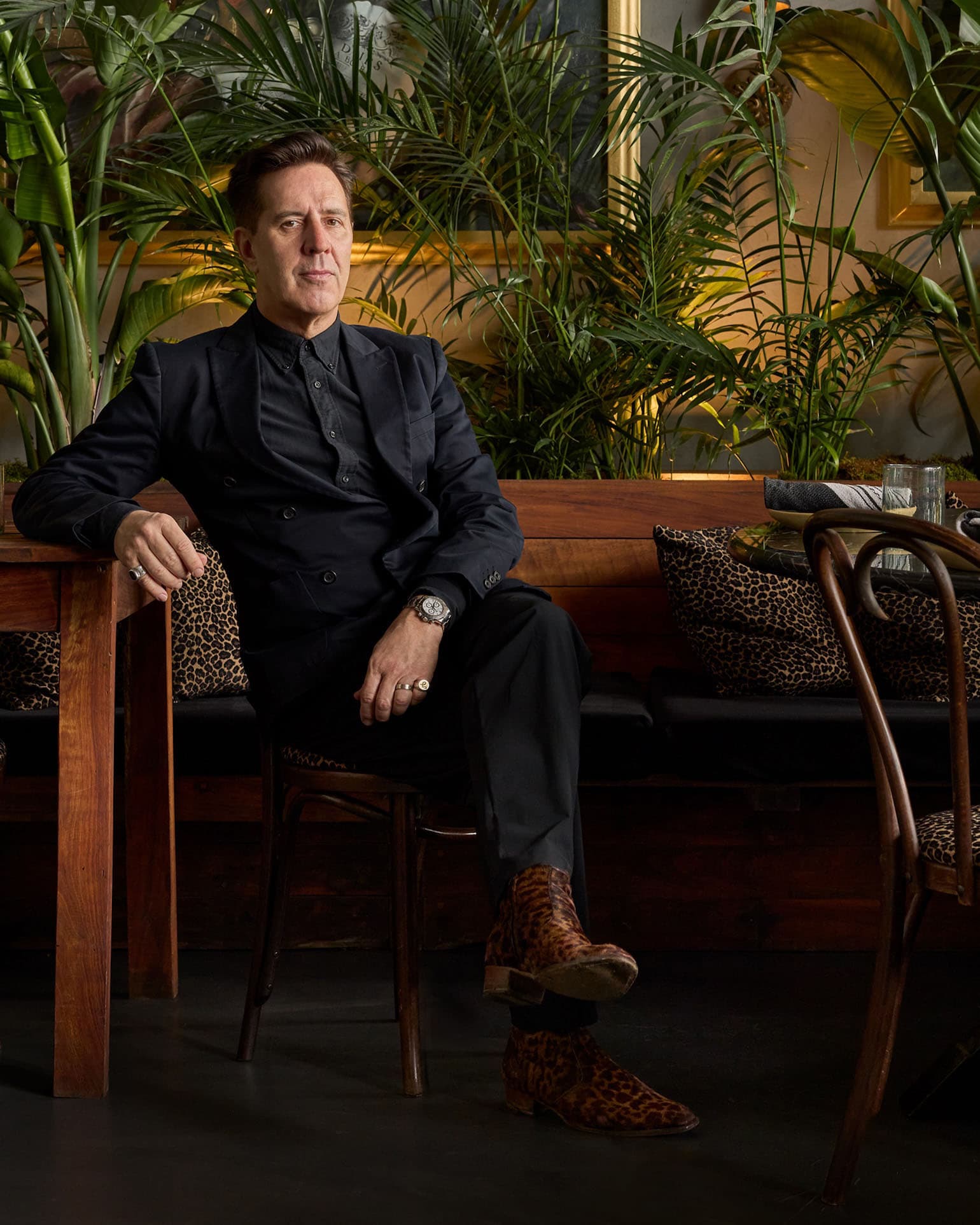
LD: In your sports car?
JG: Yes! And she said on the phone… ‘I’m not feeling very glamorous.’ And then I pull up and she’s in this black leather mini, which years later I found out was Alaïa. She’s feeling sweaty, not glamorous, and she’s in a black leather Alaïa mini dress. Isn’t that crazy?
I picked her up in my sports car, and suddenly we’re at James Brown’s house with Kate Moss. And [me and Kate] hit it off, and she was like, ‘Oh, will you walk me home?’ So I walked her home, and I do remember people looking at us. I still knew nothing about fashion. I used to buy i-D and The Face religiously in the UK, but I didn’t know people. But I remember people were really looking at Kate, and I’m like, ‘Oh.’ When we arrived, I think Johnny [Depp] came to the door. It was a moment.
And then, separately, Sue was one of the key people who introduced me to the others. And then around that period, Erich Conrad… he used to do this party in New York for years on Tuesday nights called Beige.
LD: Oh, I used to love Beige. It was amazing.
JG: And [one night], Erich’s like, ‘Come out, come out.’ And I’m like, ‘No, I don’t want to.’ But I ended up at Frankie Knuckles’s birthday party and that’s where I met [my partner] Andrew. And then we’ve never been apart since.
LD: Oh my God, that’s so amazing.
JG: And then a few months later, Erich says, ‘I want to introduce you to someone, but you need to behave yourself, James.’ He’s always telling me this. I’m like, ‘What do you mean?’ So he introduced us to Massimo Cuvilleo, who was dating Marc Jacobs. So suddenly I had Sue over there with one group of fashion people and Massimo over there with another group. It was just all these moments that came together.
LD: How long have you and Drew been together now?
JG: Oh my God. I say a hundred years because the real number just makes us sound so old.
LD: That’s cute, though. I love you two together, and I’ve known you both for a really long time. I love your work dynamic – your business mind and then his creative mind. You really balance each other.
JG: Our birthdays are exactly six months apart. Even in our meetings in London last week, they pointed out, ‘Oh, you guys are opposite.’ He’s the quiet, lovely, kind creative. We do the creative projects together. We do knock heads a bit, but the results are fantastic.

LD: Which location do you think, as a couple, you’re most visually proud of?
JG: I often get asked the question, ‘Which location do you like the best?’ It’s wherever I am right now. Being in GITANO Dubai, I’m so proud of what we have built here. On our first day back, we spent hours lounging in a beach cabana, plunging in the pool, swimming in the sea, having a nibble. The crispy rice with king crab and caviar is divine. We are also proud of our partners in Dubai, Agon Hospitality, who are doing a great job with the food, drinks and service. They are all excellent! GITANO Dubai was a significant project and investment, designing and building from the ground up, integrating all brand elements, from the Beach Club to the Jungle Restaurant. The main dining room is so glamorous!
Then GITANO NYC happened. It is sublime, beautiful and dramatic. We could not be happier. This was also a very significant design and development project, in partnership with Seaport Entertainment Group, a public company listed on the NYSE. GITANO NYC has definitely elevated the brand to a new level, in terms of architecture, design, and sophistication, showing that we’re capable of way more than just the jungle.
And then the hotel. I mean, can you believe we designed a fucking hotel? And you’ve watched the whole journey. From being the baby queen who worked on Wall Street, to building the kind of company working on the inside of [fashion], to then being back on the outside. Fashion-wise, they are the three chapters. I was the outsider who was entertaining everyone, then I was someone working with the industry, on the inside, with the CMO at Burberry and the CMO at Vuitton. Now I’m back to being outside [fashion] and back to entertaining, giving a show, and not giving a fuck. While of course still loving all of our fashion friends and supporters!
LD: What you did in fashion was quite pioneering, right? You created the first digital platforms for fashion brands.
JG: For all the biggest brands. Marc Jacobs, Stella McCartney, Bottega Veneta. Burberry was a massive client in London. Calvin Klein, Tom Ford. The list goes on.
LD: How did you pivot from being on Wall Street into that?
JG: Well, while we were in that ‘friends of…’ mode with these people, just having fun and enjoying fashion time, people would say to me, ‘Oh, you’re on Wall Street, do you want to invest in my brand?’ But I’m not really an investor. And there was this one guy, Tony King, who was part of the gang that we were hanging out with regularly, and he and I were both travelling to London one time. He was working at Gucci in their tech department. And he’s like, ‘I’ve got this idea for this tech platform for model agencies to share images.’ It was just as broadband was happening, and there was no Flickr or iPhoto, social media or even iPhones.
LD: He was like, ‘You should be entrepreneurial.’ Because I was in the hierarchy of Wall Street, where one day a year, the mood of the markets and your boss decided if you got a [big] bonus [or not]. It worked a nerve, let’s just say. So he convinced me to be an entrepreneur, and I haven’t looked back since.
JG: So I raised $1m from people I knew on Wall Street. We started the company, opened an office on Broadway in Soho, hired the team, and started building the software. But I’d gone to a few pitch meetings at model agencies, and realised quickly they don’t really have money, and different image-sharing tools were launching. So I was like, ‘How are we going to make money?’ But then we received a call from LVMH brand Marc Jacobs International, asking if we could help with their website. We took a meeting with the President, Robert Duffy, who I had met previously, and he, like all luxury brands at the time, was nervous about sharing product images online. They also wanted tools to be able to update the new website themselves. We left the meeting, and I called our CTO to ask if the tools we had built to share images could be used to update a website. He came back to me and said it could, and we created our first version of a CMS (Content Management System). Also, because I’d previously been attending fashion shows and hanging out with fashion people, we knew the backstage and the language. We presented an amazing creative concept and our CMS, which they loved and signed up for. We launched the marcjacobs.com website during their September 2004 fashion show. The reaction from the fashion industry was amazing, and suddenly every brand was calling and wanting to work with us!
LD: So you did this amazing fashion thing, and then you pivoted. Also, what’s quite interesting is that we were together for both our first times in Tulum. I remember we were there for a Christmas, all on vacation. I remember being like, ‘What is this town? There’s nothing here.’
JG: That was all before GITANO.
LD: I think the only thing that was there really was Posada Margherita. I remember us all going to Posada Margherita and being like, ‘Oh, this is like a scene. There are beautiful New York fashion people here.’
JG: Yes. And these are all the little areas that our stories intertwine. Even going from Wall Street to having a digital e-commerce branding marketing agency, and then pivoting from that with GITANO, it was just another [case] of seeing an opportunity. We invested in a little bar, a mezcal bar in Tulum, and we saw the opportunity to make it something bigger.
LD: I love that you describe it just as ‘a little mezcal bar in Tulum.’ Like it’s a little shack on the street. But, yeah, I feel like you have been a big part of the evolution of Tulum. We should talk about the hotel a little bit, because I was very lucky to stay there when you did your soft opening last Christmas.
JG: I mean, if you were doing this interview two weeks ago, and I was on this Zoom with the gorgeous Tulum beach in the back, and you asked me what my favourite location was, [I would’ve said Tulum]. I’m going to answer your question about the hotel. But you know what I can’t wait for you to see, Luke? New York. You’re gonna be like, ‘Oh my God.’
LD: I’ve seen all the pictures. I want it to receive the Guinness World Record for the biggest disco ball in New York.
JG: It is. We had to have it made in Mexico. It’s so drama.
LD: She’s high drama. And also tell me about Club Bohemia.
JG: It’s a whole other level, because it’s quite unexpected from us. It’s glamorous, bohemian, period. The day after I posted all the pictures of the kids at the club opening, everyone from Dubai and London was texting me like, ‘Oh my God, what’s happening in New York?’ A New York Post full page [story] was like, ‘Oh, the new Studio 54.’ We have never, ever set out to copy or recreate Studio 54. We’re inspired by a lot of things, Saint Laurent and disco in the 70s, early house music and The Paradise Garage in the 80s, London and NYC fashion and clubs of the 90s, and then of course Beige. So we don’t mind the reference, but we are our own thing. Someone fabulous recently said to me, ‘Oh my God, this is the real new Studio 54.’
LD: I feel like when people talk about what you do with Studio 54, it’s because it has that essence of hedonistic, glamorous times. And those are the nights that we have at GITANO. Suddenly you’re dancing, but you’re in an evening dress and you’re next to a model and there’s a celebrity at the next table. That’s the world.
JG: 100%. The whole journey has been really great juxtapositions. But one big juxtaposition is the word gypsy with the word disco. One has to be a bit careful with the word gypsy in New York these days. But those two words together make something really fabulous. Disco is about the hedonistic glamour, freedom, abandon. That’s what I mean, as opposed to Donna Summer “I Feel Love” all night. Sure, we like that, but it can also get a bit tedious. It’s about the energy and the happiness. Gypsy then makes it world-traveller, bohemian, a different kind of glamour. Those two together make something really interesting, in my opinion.
LD: And I also feel like Tulum really epitomises that. The fact that it has its own identity, almost its own dress sense. And you gave the town its place to dance.
JG: Definitely, you could say that. You know when Kate [Moss] did that Rimmel London ad, ‘Get the London look…’ We would [say] ‘Get the Tulum look…’ We brought a bit of New York to Tulum, then we took a bit of Tulum back to New York. For Dubai, we brought Tulum and New York. It’s not a Tulum brand, it’s not a New York brand…
LD: Now, you being in Dubai, it’s a global brand. When I tell people that I went to Tulum, yours is always the place that people ask me if I’ve been to. But they don’t realise that I know you.
JG: Well, listen, I’m so grateful. Oh, the hotel… I wasn’t avoiding it. I’m so proud. I mean, ever since very early on, people were like, ‘We like your design aesthetic, do you have rooms?’ I tried multiple times to get the land next door. I spent years trying to find a way that we’d launch the Casa Gitana concept, and finally, things fell into place. It’s literally one of the biggest and most beautiful pieces of land in Tulum, just before the Sian Ka’an. It’s in South Tulum – the luxury end. Right next to the new Soho House that’s opening. I think we’ve been able to show what GITANO is – both day to night, health and fun integrated. Because when you’re staying in a hotel, you want reset. GITANO is known for the fun and glamorous side. Having both those work together creates another interesting juxtaposition. You come to relax, refresh and chill on the beach, but you have your fun dinner-dancing moment. It’s those two things working together. I know you’re not coming this Christmas, but get back for high season, lover.
LD: High season, that’s a good idea. Can you believe I’m doing an English Christmas!?
